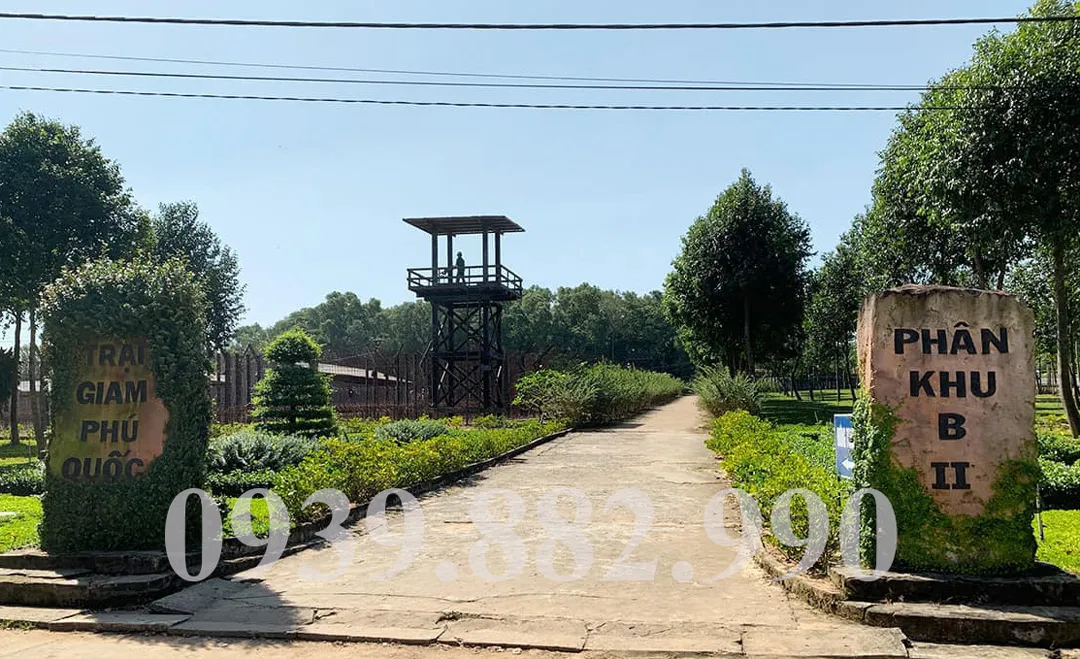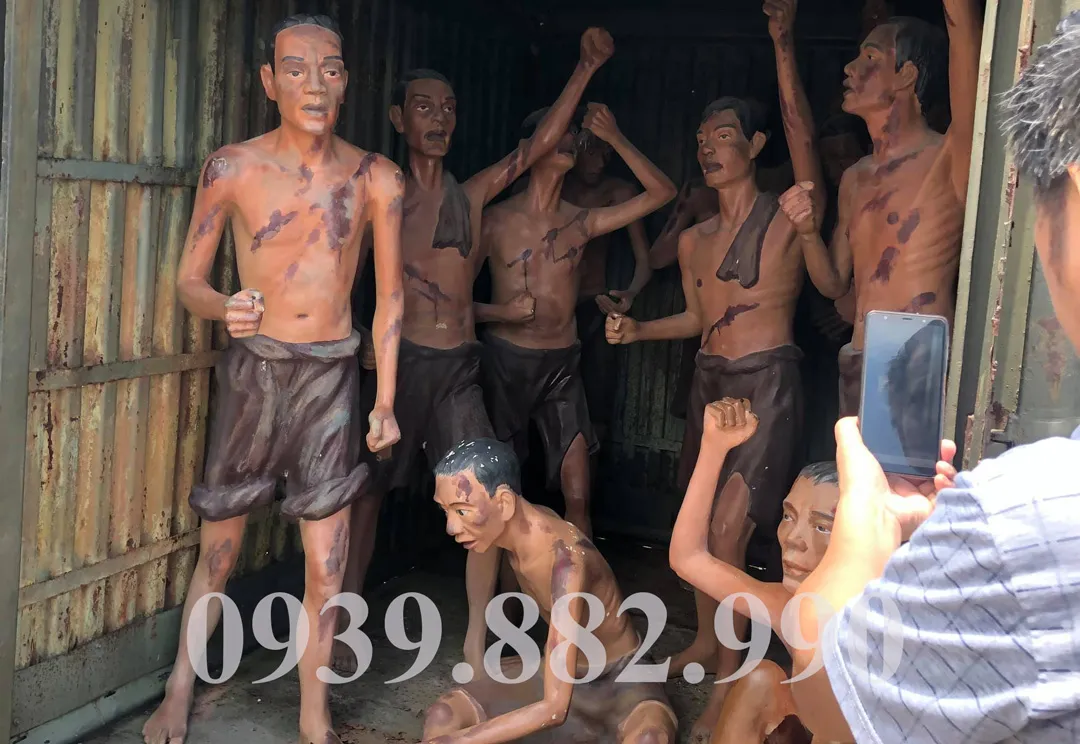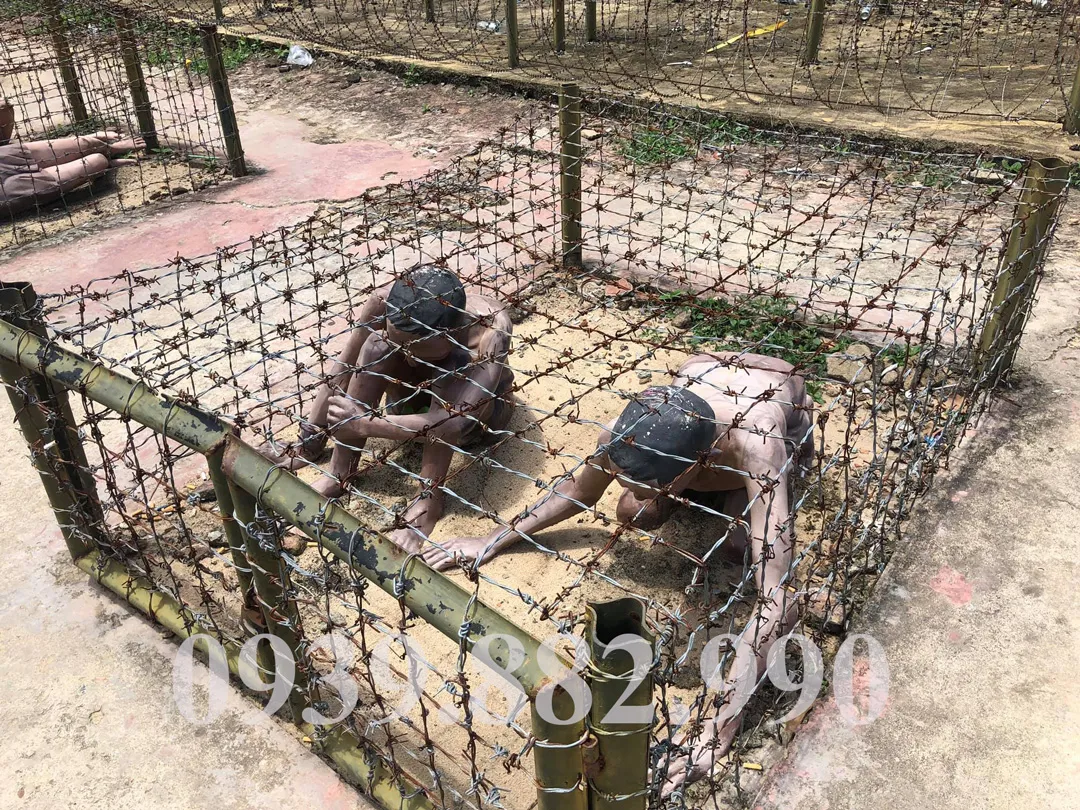Phu Quoc, Vietnam’s stunning pearl island, not only captivates visitors with its long stretches of white sandy beaches and crystal-clear waters but also holds the imprint of a heroic and solemn history. One of the most historically valuable sites that travelers should not miss when visiting Phu Quoc is Phu Quoc Prison, also known as Coconut Tree Prison. This site stands as evidence of wartime atrocities and symbolizes the indomitable spirit and resilience of the Vietnamese people.
Exploring Phu Quoc Prison offers visitors the chance to delve into history, understanding the painful years that countless revolutionary soldiers endured. This journey is not merely a sightseeing activity, but also a heartfelt tribute to the heroes who sacrificed their lives for the independence and freedom of the nation.

1. Overview of Phu Quoc Prison
Phu Quoc Prison is located in An Thoi town in the southern part of Phu Quoc Island, Kien Giang province. During the Vietnam War, it was the largest prison camp in southern Vietnam, built by French colonists in 1949 and later expanded and operated by the U.S.-supported South Vietnamese government. Spanning an area of 400 hectares, the prison could hold up to 40,000 prisoners, primarily revolutionary soldiers and patriots subjected to brutal torture.
Phu Quoc Prison was not just an ordinary detention center but became a symbol of the immense cruelty and inhumanity of war. It stands as a testament to the savage atrocities committed by foreign invaders against the Vietnamese people and the unyielding courage and steadfastness of communist prisoners.
2. History of Formation and Development
a. French Colonial Period (1949-1954)
Phu Quoc Prison was built by French colonists in 1949 to detain political prisoners and anti-French resistance fighters. From its inception, this site was notorious for its brutal and inhumane torture methods. Coconut Tree Prison, part of Phu Quoc Prison, was one of the harshest detention areas where patriots endured savage beatings.
b. U.S.-backed South Vietnamese Era (1955-1975)
After the French colonial defeat, South Vietnam’s regime, supported by the U.S. military, took over and expanded Phu Quoc Prison. This era marked the escalation in the severity of torture tactics and prisoner suppression. The prison’s capacity increased to 40,000 inmates, turning it into a “living hell” for revolutionary fighters.
Gruesome methods such as driving nails into bodies, electrocuting prisoners, keeping them in “tiger cages,” pouring soap water into their mouths, and other heinous acts were systematically applied. Despite these horrors, the prisoners remained resolute, transforming the prison into a revolutionary school where patriotism and determination were fostered.
c. Post-Liberation Period (1975 – Present)
After Vietnam’s reunification in 1975, Phu Quoc Prison was officially closed. It has since been preserved as a national historical site and an educational tourist destination. Each year, thousands of visitors from around the world come to Phu Quoc Prison to learn about its history and pay tribute to those who sacrificed for the country’s freedom.

3. Brutal Design and Scale
Phu Quoc Prison was built with a fortified system, featuring multiple layers of barbed wire fences and strict security. Inside the prison, it was divided into various zones, including detention areas, torture chambers, living quarters, and administrative zones.
- Detention Areas: Comprised of makeshift buildings constructed from materials like corrugated iron, wood, and steel. Cells were cramped with poor ventilation and lighting, leading to rampant diseases.
- Torture Chambers: Known as the prison’s “black heart,” these areas housed the most brutal and inhumane torture methods. Instruments like tiger cages, nails, pliers, and electric equipment were used to torment inmates.
- Living Quarters: Prisoners faced extreme deprivation in living conditions. Food, water, and medicine were insufficient, and unsanitary environments caused widespread sickness.
4. Inhumane Torture Methods
Phu Quoc Prison was infamous for its barbaric and inhumane torture methods, reflecting the vicious nature of colonial and imperial powers.
- Tiger Cages: Prisoners were confined in small iron cages where they could neither stand nor stretch, exposed to harsh weather conditions.
- Electrocution: Applying electric shocks to sensitive body parts, causing unbearable pain.
- Driving Nails: Hammering nails into prisoners’ hands, feet, or heads.
- Tooth Extraction: Using pliers or hammers to extract prisoners’ teeth.
- Live Burial: Burying prisoners up to their necks and leaving them to die.
- Soap Water Torture: Forcing prisoners to drink soap water, inflicting internal damage.
These methods inflicted physical agony and severe psychological trauma on the prisoners.
5. Indomitable Spirit of the Revolutionaries
Despite enduring unimaginable suffering, the revolutionary fighters imprisoned at Phu Quoc Prison maintained their steadfast resolve and patriotic spirit. They turned the prison into a revolutionary school for studying ideological theories, exchanging experiences, and strengthening their determination.
Numerous uprisings and escape attempts occurred within the prison, ranging from peaceful hunger strikes to daring jailbreaks. Their unyielding spirit became a symbol of Vietnamese patriotism and revolutionary zeal. One of the most notable events was the daring escape in 1969, where hundreds of prisoners successfully tunneled out.

6. Phu Quoc Prison Today
Today, Phu Quoc Prison serves as a national historical site and a popular tourist attraction. Visitors can explore exhibits showcasing artifacts, photographs, and documents related to the prison’s history. The displayed materials vividly and powerfully recreate the harsh conditions and heroic spirit of revolutionary fighters.
Visiting Phu Quoc Prison is not just a tourism activity but also a journey to reconnect with history and appreciate the value of peace and freedom.
7. Important Notes for Visitors
To ensure a meaningful and respectful experience, visitors should keep the following in mind:
- Dress modestly: As a historical and spiritual site, wear appropriate clothing to show respect.
- Maintain cleanliness: Avoid littering and keep the environment tidy.
- Preserve quietness: Respect the solemnity of the site by avoiding loud noise.
- Research the site’s history beforehand: This will enhance your understanding of the artifacts and stories presented.
- Consider guided tours: Guides can provide detailed insights and enriching perspectives about the site’s history.
8. Conclusion
The journey to explore Phu Quoc Prison is an emotional and meaningful experience. This site stands as a reminder of the profound cost of independence, peace, and freedom. Visiting Phu Quoc Prison allows us to pay homage to the heroes who fell and deeply understand Vietnam’s heroic history. The visit promises lasting impressions and reflections that provoke thought about life and humanity.